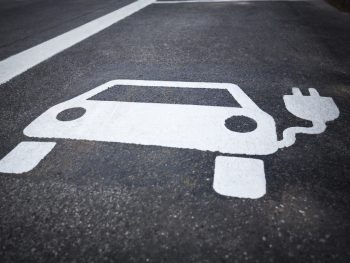New research highlights barriers and solutions for accessible EV design
A new report exploring the barriers to making the design of electric vehicles accessible for disabled people, and how these could be addressed is now out.

The report finds that the requirements of disabled people are not being sufficiently considered in the design and production of EVs
Published by charity Motability and the Energy Saving Trust, the report finds that the requirements of disabled people are not being sufficiently considered in the design and production of EVs, with wheelchair accessible vehicle users (WAVs) in particular raising concerns about finding models suitable for their needs.
A survey of disabled WAV users conducted as part of the research found that over 70% of respondents have considered driving an electric WAV, with over 25% planning to get one as their next vehicle. However, the limited choice of suitable vehicles available is a key concern for disabled people, with 85% of respondents listing it as a significant barrier for them. Examples of unsuitable design features included some electric vehicles not being tall enough for some seated wheelchair users, or not enough boot space for mobility equipment.
With the control systems in EVs becoming increasing advanced, the report identifies that more engagement is needed to ensure that new features work for disabled people. The placement of the battery and the charging socket are highlighted as key accessibility concerns for EVs. The position of the battery is a key concern for adapters and converters, and is a particular challenge to producing small WAVs, which are the preferred size for many WAV users.
The research also spoke with the adaptation and conversion industry and found they have limited engagement with vehicle manufacturers. This makes it difficult for them to obtain technical information about the vehicles they need in order to meet the accessibility requirements of disabled customers.
Motability Operations, which carries out the day-to-day running of the Motability Scheme, also contributed to the research. Over 630,000 people currently use the Motability Scheme, and more than 5% of all vehicles used by Scheme customers are WAVs. Around 10% of all cars on the Motability Scheme have an adaptation.
The report makes a series of recommendations for overcoming the challenges identified relating to accessible and inclusive EV design. These include encouraging greater engagement between converters, adapters and vehicle manufacturers, and establishing design principles for accessible EVs.
Barry Le Grys, chief executive officer of Motability, said: “With the sale of new petrol and diesel vehicles set to end in 2030, we want to ensure that the transition to EVs is accessible to all. While we continue to make progress on the accessibility of public charge points, it’s clear from this research that further work is needed on vehicle design. There is a risk that disabled people could lose the vital independence that having access to private transport brings if these issues are not addressed by 2030.”
The charity will now work with partners including Motability Operations to encourage further engagement on this issue and develop practical solutions for accessible vehicle design.
Tim Anderson, head of transport, Energy Saving Trust, commented: “This research highlights the significant barriers faced by disabled people and the industry when it comes to the design and provision of accessible vehicles. We hope the recommendations given in this report will help to address these barriers and once actioned, will support an equitable transition to electric vehicles. We will continue to provide leadership, support research and deliver programmes in this area research and delivery in this area, making transport inclusive to all.”
Motability has previously conducted research into the accessibility of EV charging infrastructure, which led to the creation of the BSI standard for accessible public chargepoints (PAS 1899).
The new report is here.

